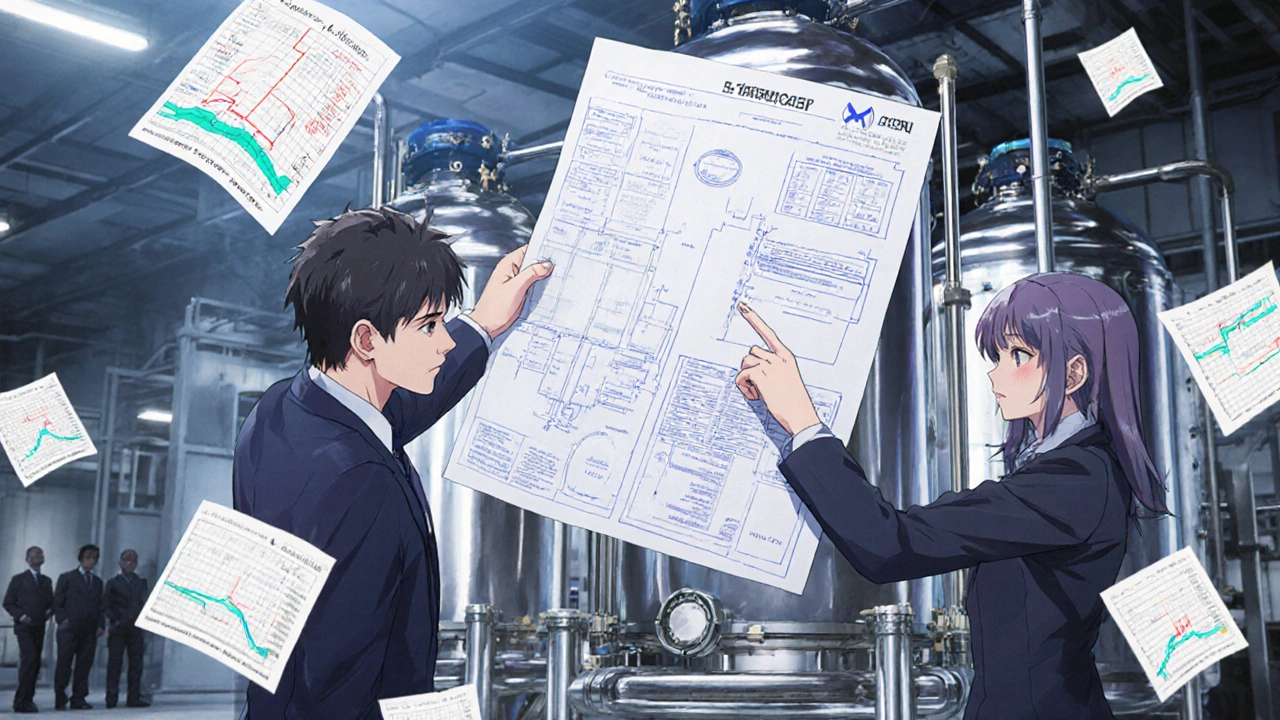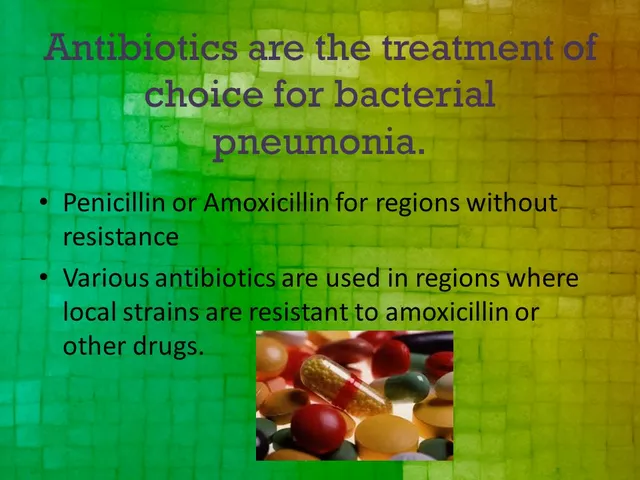What Happens During an FDA Inspection of a Generic Drug Facility?
If you run a generic drug manufacturing plant and the FDA shows up unannounced, you won’t be caught off guard-if you’ve been doing this right. The FDA doesn’t just show up to find faults. They show up to confirm that your facility can consistently make safe, effective, and high-quality medicines. And for generic drugs, that’s not just a formality-it’s the foundation of public trust.
Every facility producing generic medicines for the U.S. market must follow Current Good Manufacturing Practices (CGMP), outlined in 21 CFR Part 211. These aren’t suggestions. They’re legal requirements. The FDA’s inspection process is built around verifying that these rules are not just written down, but lived every day in your facility.
The Six Systems the FDA Examines
The FDA doesn’t walk through your plant randomly. They use a structured, risk-based approach called the six-system model. This means they’ll focus on six core areas:
- Quality System - Always checked. This includes your quality unit’s authority, training records, deviation investigations, and corrective actions. If your quality unit doesn’t have real power to stop production, you’re already at risk.
- Facilities and Equipment - Are your cleanrooms maintained? Are your equipment logs complete? Is calibration current? Even small issues like a missing GMP label on a mixer can become a major observation.
- Materials - Where do your raw materials come from? Are suppliers qualified? Are incoming materials tested according to approved methods? The FDA will pull your supplier list and cross-check it with purchase records and certificates of analysis.
- Production - Did you follow your batch record? Was the process validated? Were environmental controls maintained during manufacturing? Investigators will trace a single batch from start to finish, checking every step against your SOPs.
- Packaging and Labeling - Mislabeling is one of the most common reasons for recalls. They’ll check for accurate lot numbers, expiration dates, and whether the right label was used on the right product. A mismatch here can trigger an immediate warning letter.
- Laboratory Control - This is where many facilities stumble. Are your analytical methods validated? Are stability studies properly stored and monitored? Are your data records complete and tamper-proof? The FDA now spends more time on data integrity than ever before.
During every inspection, the Quality System is always reviewed, plus two or more of the other systems. The combination depends on your product type, history, and risk profile.
Pre-Approval Inspections (PAIs): The Make-or-Break Moment
If you’re submitting a new generic drug application, expect a Pre-Approval Inspection (PAI). This isn’t a routine check-it’s your final gate before the FDA approves your product. The team will focus on three key questions:
- Is your facility ready for commercial production?
- Does what you wrote in your application match what’s happening on the floor?
- Is your data complete and accurate?
They’ll compare your submitted manufacturing process to your actual equipment setup. If your application says you use a 500L reactor, but you’ve installed a 750L one without notification, that’s a red flag. Same goes for analytical methods-if your lab uses a different HPLC method than what’s on file, you’ll get an observation.
Stability samples are another big focus. Are they stored in the exact conditions you claimed? Temperature logs? Humidity records? If the data doesn’t match your submission, your approval could be delayed-or denied.

What You’ll Get: The FDA 483 and Beyond
If the inspectors find issues, they’ll hand you Form FDA 483. This isn’t a fine. It’s a list of observations-usually 1 to 15 items-ranked by severity. Each one cites a specific regulation, like 21 CFR 211.22(a) for an underpowered quality unit, or 211.160 for missing equipment maintenance records.
You have 15 business days to respond. Don’t wait. Don’t write a generic letter. Your response needs to be specific: what you found, why it happened, how you fixed it, and how you’ll prevent it again. Include evidence-training logs, revised SOPs, validation reports.
If the FDA thinks your response is weak or incomplete, they may issue a Warning Letter. That’s when things get serious. A warning letter goes public. Investors notice. Customers pull orders. And the FDA will come back-unannounced-to check if you fixed it.
The New Normal: PreCheck and Quality Culture
Since 2024, the FDA launched the PreCheck program, designed to help manufacturers avoid problems before they start. It’s not a shortcut-it’s a partnership. Through PreCheck, you can submit a Type V Drug Master File (DMF) during facility design, construction, or pre-production. The FDA reviews your plans and gives feedback before you spend millions building something that won’t pass inspection.
This program rewards facilities with mature quality systems. If you’re already using risk-based thinking, root cause analysis, and continuous improvement, your inspections become less about fear and more about dialogue. The FDA is now looking for quality culture-not just compliance.
What does that look like? It’s when your floor operator speaks up about a deviation. When your QA team doesn’t just approve changes but challenges them. When your management team allocates budget for training before they’re asked.
How to Get Ready-Before They Walk In
You can’t fake readiness. The FDA knows the difference between a facility that’s been preparing for months and one that’s scrambling the week before.
Here’s what works:
- Maintain a permanent state of inspection readiness. Don’t clean up only when you hear they’re coming. Unannounced inspections are common.
- Train everyone. Your lab tech, your maintenance crew, your shipping clerk-they all need to know how to respond to an inspector. Role-play scenarios. Practice answering questions like, “What’s your SOP for this?” or “Show me the last deviation for this line.”
- Document everything. If it wasn’t recorded, it didn’t happen. That includes equipment logs, cleaning records, training certifications, and even informal discussions about process changes.
- Mock inspections. Bring in a third party to simulate an FDA visit. Watch how your team reacts. See where your SOPs are unclear. Fix those gaps before the real thing.
- Design your facility for inspection. Make sure the tour route is logical, clean, and shows your strongest controls. Don’t hide anything. The FDA will find it anyway.

What Happens After the Inspection?
After the inspectors leave, they write the Establishment Inspection Report (EIR). This is the official record of what they saw. It determines whether your facility is in a “state of control” or not.
If the outcome is “acceptable,” you’re good to go. No further action. If it’s “unacceptable,” you’ll get a warning letter or worse-your product could be detained at the border.
But here’s the good news: more than 90% of inspections result in acceptable outcomes. That’s not luck. It’s preparation.
Why This Matters for Patients and Your Business
Generic drugs make up 90% of prescriptions in the U.S. They’re affordable, accessible, and trusted. But that trust depends on consistent quality. One bad batch can cost lives-and destroy a company’s reputation.
For manufacturers, a clean inspection isn’t just about avoiding penalties. It’s about credibility. It’s about being chosen by big buyers. It’s about expanding into new markets.
The FDA isn’t trying to shut you down. They’re trying to make sure your medicine doesn’t hurt anyone. If you treat quality like a core value-not a cost center-you won’t just pass inspections. You’ll outperform the competition.
What happens if I don’t respond to an FDA 483 within 15 days?
If you don’t respond within 15 business days, the FDA will assume you have no plan to fix the issues. This significantly increases the chance they’ll issue a Warning Letter, which becomes public and can trigger product recalls, import alerts, or even criminal investigations. Delaying your response is the fastest way to escalate the situation.
Can the FDA inspect my facility without notice?
Yes. Routine inspections are often unannounced, especially for facilities with higher risk profiles or past compliance issues. Even if you’ve had clean inspections before, you should always be ready. The FDA doesn’t need to give you advance notice under CGMP regulations.
What’s the difference between a 483 and a Warning Letter?
An FDA 483 is a list of observations-potential issues the inspector noticed. It’s not official enforcement. A Warning Letter is the FDA’s formal notice that you’ve violated regulations and must fix it. It’s legally binding, public, and can lead to seizures, injunctions, or import bans. A 483 can lead to a Warning Letter if your response is inadequate.
How often does the FDA inspect generic drug facilities?
The FDA uses a risk-based model. Facilities with no history of problems may be inspected every 2-5 years. Those with past 483s, complaints, or high-risk products can be inspected annually-or even more often. The FDA also inspects based on tips, sudden spikes in adverse events, or changes in ownership.
Is the PreCheck program mandatory for new facilities?
No, PreCheck is voluntary. But it’s strongly recommended. Companies that use PreCheck report fewer surprises during Pre-Approval Inspections. The FDA provides feedback early, helping you avoid costly redesigns or delays in approval. It’s an investment in time and money that pays off in smoother approvals and faster market entry.
What’s the biggest mistake generic manufacturers make before an inspection?
The biggest mistake is thinking compliance is about paperwork. The FDA looks for evidence of a real quality culture. If your SOPs are perfect but your team doesn’t understand them, or if your quality unit is ignored by production managers, you’ll fail. Inspectors talk to people-not just files. Your people’s knowledge and attitude matter as much as your documents.
Final Thought: Inspection Readiness Is a Daily Habit
There’s no magic checklist that guarantees a clean inspection. What works is consistency. Every day, ask: Is this process controlled? Is this data accurate? Is this record complete? If you answer those questions honestly every day, you won’t just survive the FDA-you’ll thrive because of them.







Corra Hathaway
November 21, 2025 AT 22:15Shawn Sakura
November 23, 2025 AT 07:28Mark Kahn
November 24, 2025 AT 16:29Clifford Temple
November 25, 2025 AT 23:51Eliza Oakes
November 26, 2025 AT 01:06Noah Fitzsimmons
November 26, 2025 AT 14:55Franck Emma
November 27, 2025 AT 02:43Chris Vere
November 27, 2025 AT 16:22Pravin Manani
November 28, 2025 AT 18:43David Cusack
November 30, 2025 AT 17:07Willie Doherty
December 2, 2025 AT 00:52Elaina Cronin
December 3, 2025 AT 06:00Darragh McNulty
December 3, 2025 AT 07:44Sammy Williams
December 4, 2025 AT 02:28